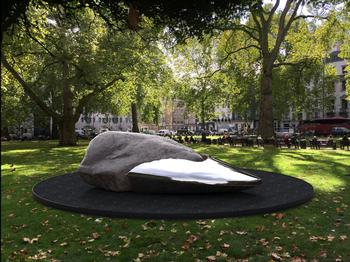featured item

quality pair of antique edwardian postal scales and weights Read more
Sculpture Old and New
Posted by Gillian Jones B.A/M.A/PGCE on 06/07/2016
Sculpture – which is your favourite period?
As a means of human expression, sculpture goes back a long way. We can trace it as far back as the Egyptians and Mesopotamians, the ancient Americas, Asians, and those beautiful freestanding sculptures of the Greeks from the Hellenistic and classic eras.
Here in Europe we had the Romanesque and Gothic periods, which would have great influence on church buildings. We’re talking Moissac, Santiago de Compostela, Hildesheim and Vezelay to name but a few.
Sculpture – which is your favourite period?
As a means of human expression, sculpture goes back a long way. We can trace it as far back as the Egyptians and Mesopotamians, the ancient Americas, Asians, and those beautiful freestanding sculptures of the Greeks from the Hellenistic and classic eras.
Here in Europe we had the Romanesque and Gothic periods, which would have great influence on church buildings. We’re talking Moissac, Santiago de Compostela, Hildesheim and Vezelay to name but a few.
Medieval to Renaissance
From the medieval times there began a long history of Renaissance sculptors where Florence was at the centre of creation. Work was either public, private or for ecclesiastical purposes. Famous artists included the Pollaiuolo brothers, and in the north, Peter Vischer and then Pilon and Goujon of France.
Baroque, neoclassicism and the realists
In the 16th and 17th centuries we’re looking at baroque with artists such as Bernini both sculptor and architect. From the 18th century Baroque was replaced by something far more intimate with Houdon and Clodion and Canova bringing us neoclassicism, a style which survived until well into the 19th century. From there we saw the realist sculptors Rodin and Rude.
From the Greek idea and Realism to Aztec and African Sculpture
Eventually the modern period saw a release from the Greek ideal and realism towards a different ideal, with influence from both Aztec and African sculpture. In the 20th century sculptors have included the artist Pablo Picasso, Jacques Lipschitz, Constantin Brancusi and Alberto Giacometti. English sculptors have included Henry Moore, Barbara Hepworth, and Jacob Epstein, with French sculptors Jean Arpand Charles Despiau having much success. German and Italian sculptors have included Ernst Barlach and Giacomo Manzu.
Modern sculpture, movement and machinery
There is movement in today’s modern sculpture, while others are meant to move when touched, with some driven by machinery. Large or small sculptural pieces still fascinate and please us and we can’t fail to be impressed with their ability to move us.
You’ll be living with your sculptural pieces so choose well
Question is, which type of sculpture are you moved by? Do you prefer the classic Greek ideal or the realism of Rodin, or perhaps you prefer African or Asian sculpture? It should be a matter of taste, rather than by what it’s worth, for sculptural pieces can be quite dynamic with a tendency to dominate, whether you have it outside or inside your home. So if you are thinking of choosing a piece of sculpture, go for something you really love, because you’re going to be the one who has to live with it.
Most people of course will have sculptural pieces inside their home and will vary in size depending on the size of your individual rooms. A lot of smaller sculptural pieces are smaller and more detailed in design and are most commonly made from bronze. There’s a feature on old and new sculpture on our homepage on www.antiques.co.uk. Some examples are The Dutch Maiden by French artist Charles Ruchot made from bronzed spelter from the art nouveau period. Another fine example is a bronze sculpture of rival buffalos by Virgin Marium Jensen from Denmark, set on a marble base. Take a look around www.antiques.co.uk and see what inspires you, start off small and if you like it, you can go bigger and more dynamic.




